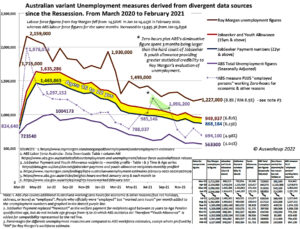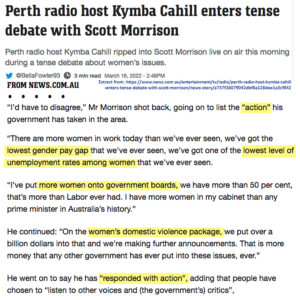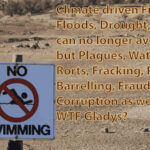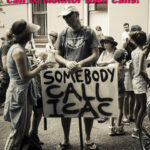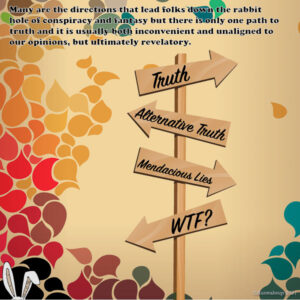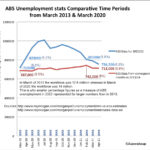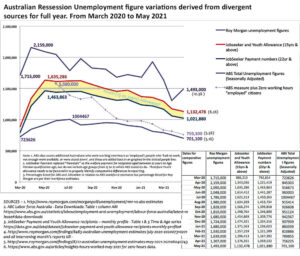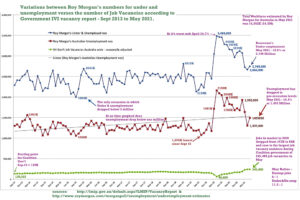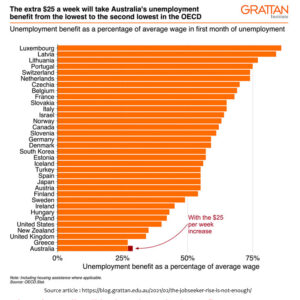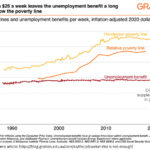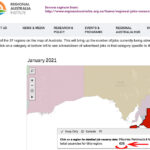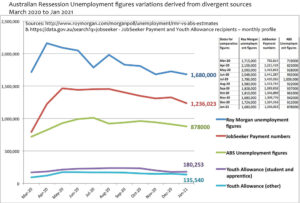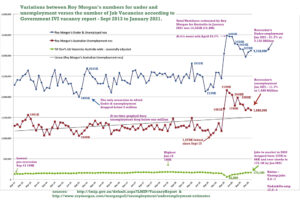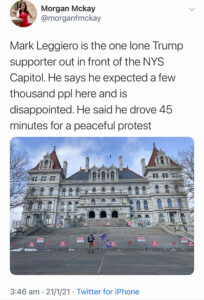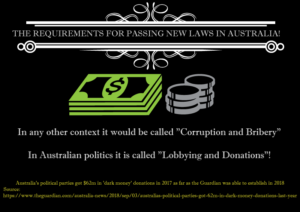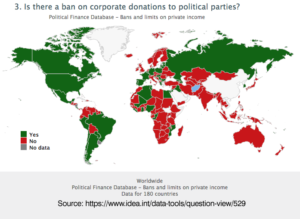“Climate change takes centre stage in Australia’s election” was proclaimed in 2019, but then the party of Climate scepticism took the stage. The polls failed to predict the election outcome on the 18th of May 2019, and “climate” wasn’t on the agenda. Even more of a climate denialist than Tony Abbott, denialist Scott Morrison held all the Aces and dealt Bill Shorten a knockout blow few saw coming.
Here we are in 2022. The French are casting an eye across the Indian Ocean, where once submarines they might have manufactured were to travel to their final destination in Australia. France 24 proclaims, “Australia’s federal election: Climate change becomes top concern for voters“. They noted, “The environmental crisis is high on voters’ minds, and smaller parties and independents are gaining momentum by riding a wave of disillusionment over the conservative coalition’s lack of climate action.” But, after suggesting minor parties succeeding and hung parliaments are the future of the Australian parliament, one must wonder, do these minor parties really have the policies that could shake the foundations of our nation?
Single issue agendas
It is easy to find articles that review how the major parties will address Climate change. But perhaps less so conspicuous is the position of all the parties. But pick an issue that you rate as necessary, such as Queer Rights, and you can find a particular interest group ready to “dish the dirt” on your favourite issue. So is there someone in your circle of associates prepared to do it on various topics? If you are looking for that someone, you have come to the right article and the correct author.
Multiple Parties and Issues

Think again, though, if you thought one should give any credibility to the ABC’s vote compass. I have previously addressed the errors of the ABC tunnel vision in my “Voting values” article. I refer to the international perspective from “The Political Compass“, which does it for every national election in western democracies. They represent their analysis of the classic Right-left / authoritarian-progressive abscissa and ordinate graph. Their results for Australia in 2022 came out recently. They placed the main parties in that two-dimensional framework for any party that has previously received a seat at the political table.
These evaluators did not look at every party that sought a guernsey at the political table (irrespective of their likely success).
The AEC informs us that, fundamentally 37 registered parties are seeking to place candidates into parliament. When the Morrison government introduced legislation that lifted the membership threshold for registering a federal political party from 500 to 1,500, some 40 parties found themselves in trouble. Some parties ceased to exist, such as the Australian Workers Party, which I evaluated as having the best range of progressive policies in 2019. Other parties (Science, Pirate, Secular, and Climate Emergency) deregistered their original name and formed their own coalition as the new Fusion Party. Others like the TNL (The New Liberals) went on a successful membership drive. So just like the last election, I began the long task of assessing the policies of 37 parties, some of whom did not exist when I last devoted myself to this task. Some old parties developed new guidelines there were no signs of three years ago, and others dropped policies I had assumed were entrenched from 2019.
In this election, I evaluated 24 specific ideological premises, starting with Climate Change mitigation and ending alphabetically with Worker’s Rights. The list of issues I evaluated from each party was:
- Climate mitigation
- Drug Reform
- Economy
- Education
- Employment
- Energy
- Environment
- Gender equality
- Government accountability
- Healthcare
- Housing and cost of living
- Immigration & refugees
- Indigenous
- Industrial relations
- Infrastructure
- LGBTQ rights
- Media Management
- Monetary principles
- Poverty and inequality
- Public transport
- Security/ Foreign & Domestic
- Social justice
- Superannuation & pensions
- Worker’s Rights
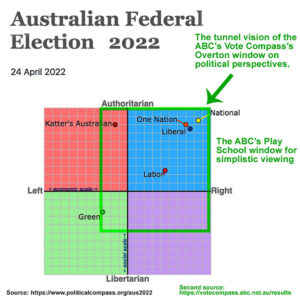
Some of these issues came from a list of policies generated by ABC’s vote compass analysis of what participants were interested in from back in 2019. I then added a few other policy agendas or, in some cases, split issues. For example, I split climate issues into direct mitigation separate from environmental issues.
I documented how I defined each of these with a series of questions about each issue and assessed the contents of each party’s policies. You can find that at: http://auswakeup.info/issues/election-issue-2022.pdf.
Another table was created with columns for 37 parties with 24 rows for each issue. From this, I began writing notes or abbreviating the lists of policy positions each party gave to that issue. That took a good while, as parties don’t necessarily neatly describe their policies in the categories I generated. In some cases, they had policies whose classes I didn’t evaluate. The PDF for that is at http://auswakeup.info/issues/party-comments.pdf, but you will have to zoom in to get all the detail. Don’t try examining this on your tiny smartphone screen. It is important not to mislead you. I have not listed all the party’s policy positions, and I may have missed some. Some party’s policies are very comprehensive, and when I realised I had enough to make a reasonable assessment, I moved to the next issue. It took me over a week to do what I have done, so I did not wish to get bogged down in extraneous detail.
As I completed the assessment to the point where I had a broad summary for each party, I scored the results and moved to the next party’s website.
Pecuniary Interests Register
First off, I should address my allegiances. As a Journalist, I am a current member of a registered political party that, while still in existence, has no stake in the federal election. I am a founding member of the Arts Party. They voluntarily deregistered from the national sphere well before Morrison changed the rules. They are still registered at the State level, where the executive decided to focus their efforts. I also spent two and a half years on the executive of the Real Democracy party developing and building it. It was a social democratic party that based its economic policy on Modern Monetary Theory. In 2019 we gave up on the hope of ever getting it registered.
My Philosophical framework.
I would consider myself a socialist, although the family that brought me up, would be better described as “Small-L” liberals. When at 18 I went off to vote for the first time, my Father, after telling me how they voted for the local Liberal candidate, asked me for whom I voted? My disrespectful reply was, “Well, at least I cancelled out one of those votes!” My Father was aghast but fortunately loved me enough not to disown me.
This is the lens through which I evaluated and scored each party. You can take my notes and re-evaluate how you might score them per your own principles.
Scoring
I rated each party’s position on the 24 issues from minus one to three.
- -1 : my assessment of the party’s position is that I hold it is deleterious to our society, economy and country. For example, climate denial/recalcitrance always got a minus one, as did evident anti-vaxxer ideologies and support for the crime of offshore refugee detention positions.)
- 0 : means no policy was mentioned on this issue or was either relatively insignificant or aspects were so mixed between deleterious and reasonable as to cancel one another out. For example, Katter’s lousy policy on creating a new class of Blue Card that applies only to Indigenous communities. Still, he also has an excellent approach to inalienable title deeds issued to First Australians.)
- 1 : represents the bare minimum or basically a reasonable approach but nothing to write home about. For example, Kim for Canberra says, “religion should not be used to discriminate against others in any context” which, while good, is the bare minimum for Social Justice issues)
- 2 : it means good but needs improvement or doesn’t cover the entire scope of the issue. The Reason party has good pro-renewable energy policies and divestment from fossil fuels. Still, there are no specific strategies around subsidisation, phasing from one to another, and energy security, which is a commonly missing aspect.
- 3 : a great set of policies for this area, perhaps complete or so little missing as to suggest the party would likely progressively fill any gaps in the future. For example, the comprehensive policy for Indigenous people comes from the Indigenous Aboriginal Party of Australia.)
Integrity
Evaluating a policy position has to assess the integrity of the claim. If the party lacks integrity or has a record of lying to gain a political advantage, that has to discredit their claim to a policy. So, for example, when the Liberal party claims to have a policy to “back small businesses with tax incentives”, I have noted that is not so if they are removing the Low and middle-income earner tax offsets. If you want a good laugh at Josh Frydenberg trying to spin it, watch Richard Denniss disassemble his claims on YouTube.
An alternate example might be the new housing policy for young first time home buyers to use 40% of their superannuation. I noted in my matrix that Morrison had already “allowed superannuation depletion by 3 million people” when he permitted people to access these funds during Covid in lockdowns rather than funding them through Job Keeper. Now Morrison suggests taking even more out of superannuation to support the housing crisis. Which even the “Investment Magazine” thinks is a bad idea. They expressed their concerns in their article “Deposit dipping into super not the answer to housing crisis” Sufficient to say, despite what Morrison claimed was a good policy, on the issue of “housing and cost of living“, I awarded the Liberals a negative one rating.
Weighting the results.
In addition to direct scoring, I have weighted my scoring also. I have doubled my initial scores for four policy areas I believe are crucial for this election. Those four areas are:
- Climate mitigation.
- Economic monetary principles (MMT).
- Corruption and accountability management.
- The Rights of the Working Class.
This should be the climate election; 2019 was not. Catering to the neo-liberal economic principles based on the Monetarism theories of economic models developed by Adam Smith, Friedrich Hayek and Milton Friedman and promoted by Alan Greenspan, Robert Murphy, Paul Krugman and Jonathan Hartley is deplorable. It fails to recognise that we are an economically sovereign nation that issues our currency that everyone else uses. Instead, we should be following the post-Keynesian theories based on John Maynard Keynes and regenerated as the Modern Monetary models promoted by Prof Bill Mitchell, Stephanie Kelton, Pavlina Tcherneva and Warren Mosler. Books to read on this include “Doughnut Economics” as espoused by Kate Raworth, Stephanie Kelton’s “Deficit Myth“, “Reclaiming the State” by Prof Bill Mitchell and “Job Guarantee” as written by Pavlina Tcherneva. Corruption in politics costs society and business, and a Federal ICAC with teeth and divestment from corporate political donations are research subjects my wife specialises in and about which she has written extensively. As for Worker’s rights, well, I am, after all, a socialist, so I think that is important. However, while no Australian party declares the workers should seize the means of production as they did in Spain in 1936. Some of us see the value of a less violent uprising that might achieve that goal.
My results
So now that all my caveats, preferences, prejudices, etc., are loudly proclaimed, here are my resulting scores. Presented both with and without my weighting, which is published in the PDF located at http://auswakeup.info/issues/party-policy-scores.pdf.
You can print it off, and using the data in http://auswakeup.info/issues/party-comments.pdf, you can restore it in accordance with your own values. {Note: you will need to print the latter on A2 sized paper for it to be readable}
Preferences
Some results were unexpected. Parties I scored highly in 2019 have dropped better policies for poorer ones, by which I was disappointed. But then parties that were fair before have lifted their game in 2022. Due to this exercise, I have changed my mind about which parties and the sequencing I will vote for them. “What gets measured, gets managed“, as my small-liberal voting Father often said. He was right in some things, and I honour his memory by respecting that advice.
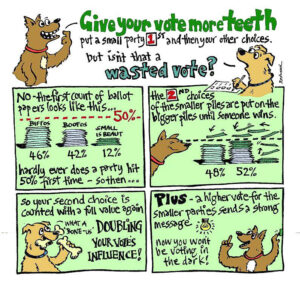
The last warning or advice from this article is, for heaven’s sake, Australians, stop being so lazy as to abdicate your choices to party preferences, and choose your own preferences — number all the boxes. Understand how preferences work and use them to your advantage. Even if your best choice doesn’t receive a place at the political table, they might get enough funding from the AEC to keep going. Your preference vote will move to the next party in your choice of preferences until it settles on a winning party. That is the power of preferences, so don’t buy into this propaganda that you can’t vote for minor parties because this is a crucial election (they all are). It is not necessary to vote first for a likely winning party as that constitutes bandwagon voting and diminishes the power of your Australian preferential vote. Your vote will still get to that party! With all the potential corrupt corporate donations, the duopoly of Labor and Liberal doesn’t need the AEC money, but a smaller party with better policies does.
Summary
My three highest-scoring parties, irrespective of my weighting (but also including it), are TNL (The New Liberals), Socialist Alliance and the Reason Party. Conversely, the three lowest scorings, all of which have accumulated a negative score over 24 areas of evaluation, are Pauline Hanson’s One Nation, the Nationals and the Liberal Party.
Saturday the 21st of May 2022 is upon us this week. Choose wisely!
